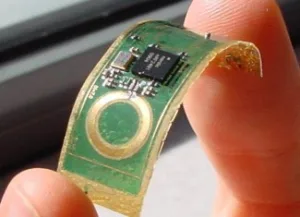OLED displays are a growing market segment that requires flexible encapsulation. IDTechEx Research has thus forecast a flexible electronics market value of over $200 million by 2024 – mainly driven by flexible mobile displays.
Samsung Display is thought to be ahead of its rivals in the flexible encapsulation space, using the Vitex multilayer (ML) technology that it acquired in 2010 (Display Monitor Vol 19 No 19). IDTechEx expects the Vitex technology to be used in the next generation of foldable displays.
A hybrid solution, based on the TFE-ML encapsulation inorganic/organic/inorganic method, plus a face-encapsulated barrier, has been adopted by LG Display. IDTechEx believes that inorganic silicon nitride films are deposited by plasma-enhanced chemical vapour deposition (PE-CVD). The organic layer is several microns thick and, according to papers presented at SID this year, is deposited by screen-printing. A barrier film is laminated on top of this TFE barrier by ‘barrier pressure sensitive adhesive’.
Hybrid schemes, like LG’s, are used by several tier two OLED manufacturers, such as AUO and BOE. These companies are currently working on OLED production on glass; flexible displays are used as demonstrators.

